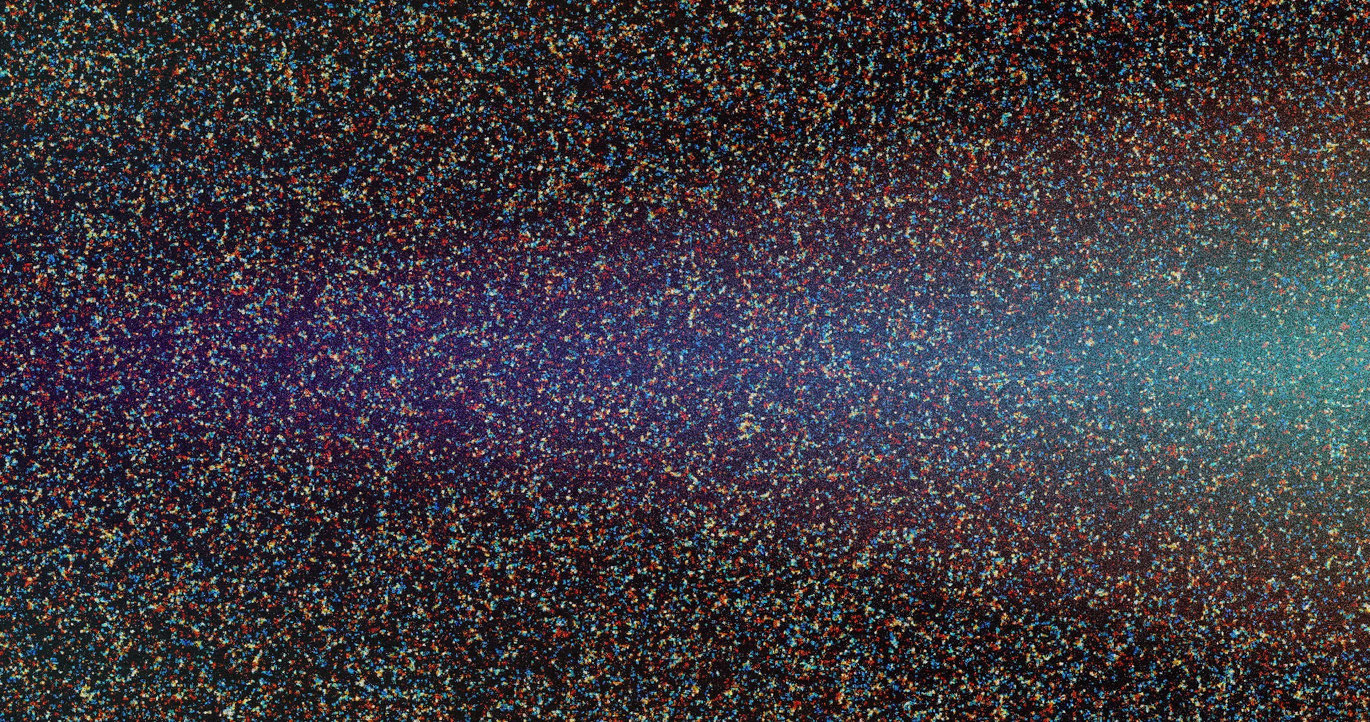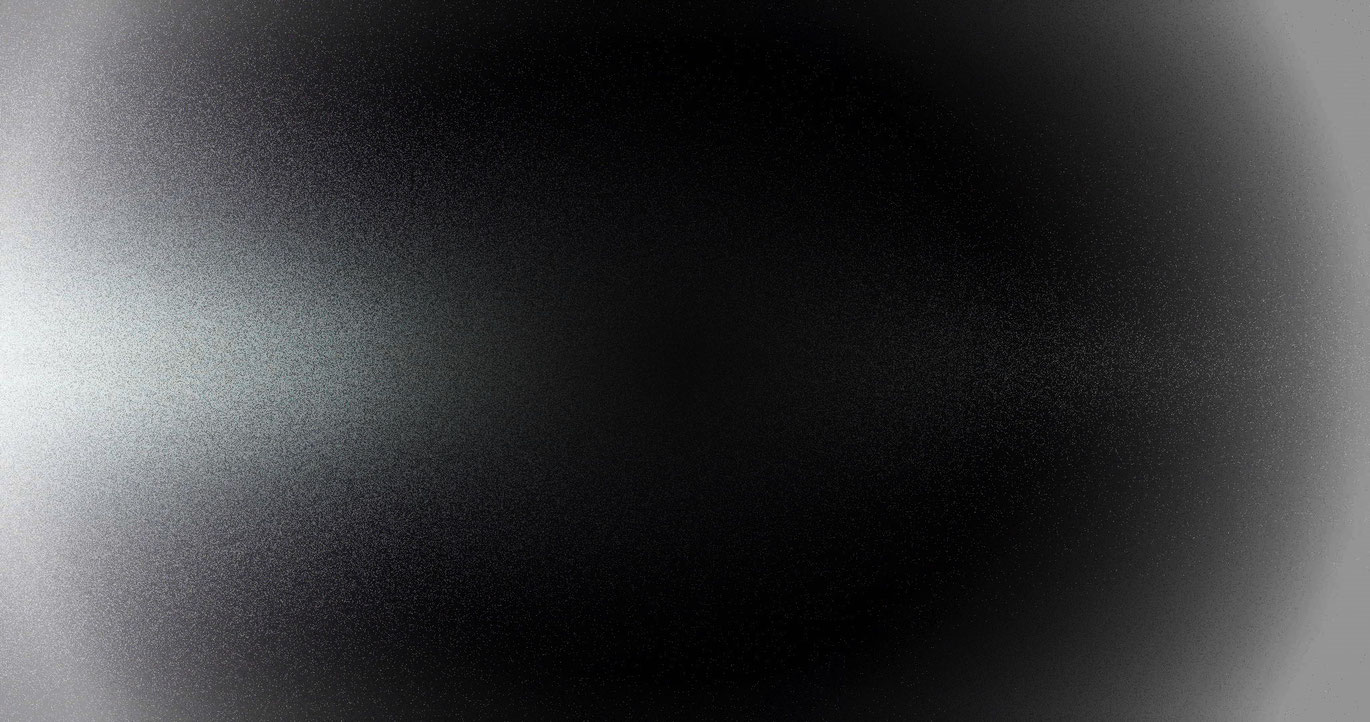more than everything
In a certain way, the stereoscopic image produced here, of abstract, moving information, is a remarkable test for perception. Since there is no distinct body in the space, also no object fixation takes place; our habitual seeing becomes inadequate. Already the first cut - a demonstratively implemented ubiquitous static - allows the moving picture to lift from the screen; there is no longer any dependence on the projection´s carrier surface, all visual data vibrate at a certain distance, an in between. Whereas narrative 3D cinema presumes the perceptual difference of a stable background and the depths of the bodies lifted out from it; here, an emancipation from natural object perception takes place. This stream of ambiguous visual material´s ontological status is somewhere between gas- and water-shaped. Rainer Kohlberger programs both channels differently, places a visual incoherence at the origin of the images, provokes a "binocular rivalry." Our perception apparatus no longer applies a statistically calculable synthesis, does not generate a powerful third element (the "depth") but instead produces, as the title also heralds, a capricious "more" from the structural ambivalence. A more that generates restlessness, even the geometric figures no longer create certainty for the order of the space. All attempts fail to locate these images interpretively. The demand for a uniform-coherent form (of the nation state, the everyday objects, or images) is rejected with the indication that coherence should always be a readiness to admit every interregnum of form, no matter how unknown or strange. (Marc Ries)
Translation: Lisa Rosenblatt
This is a dance between your brain and the world. A hallucinatory figure of information that speaks on the threshold of being. We are bathed in interferences from sensual data to what might be out there. We will go to another land, we will try another sea. One plus one equals three. (Rainer Kohlberger)
Humans and other animals that have their eyes attached towards the front of their bodies see the world with binocular vision. Stereoscopic seeing enables a precise perception of depth. This film challenges this perceptual apparatus that interacts with the brain to generate a coherent image of the surroundings. In more than everything, I use stereoscopic technology that was experimented with in early and pre-cinema by Münsterberg et. al and became installed in digital cinema in the last ten years due to the popular culture of 3D movies.
Here different images for the left and the right eye were generated that are blended to a third image in the spectators brain. We have the tendency to prefer visual input from one eye to the other, a phenomenon called ›Ocular dominance‹. Approximately two-thirds of the population is right-eye dominant and one-third left-eye dominant (some don´t have a preference). If the perceptual apparatus has to deal with different inputs for each eye, instead of superimposing the image in the brain it alternates between the two images, something called ›Binocular rivalry‹. In this cinematic endeavour, the characterised physical phenomena above are incorporated in its artistic formulas. According to the visual preference of the viewer for one eye or the other, the film will be perceived quite differently. Other parts give the same importance to both channels where an oscillation between left and right will occur.
Due to its nature, the film has to be presented with stereoscopic technology, there´s no other version of it. Still, if someone in the cinema does not want to wear glasses (or only got one eye), I took care in the artistic process that it is still possible to watch another consistent version of the film. (production note)
SHOW & TELL: Rainer Kohlberger at Anthology Film Archive
Rainer Kohlberger at Anthology Film Archive
program note:
Though Austrian-bred, Berlin-based artist Rainer Kohlberger has been active only for the past decade, his work is so assured, perceptually challenging, and visually overwhelming that he´s become one of the leading lights of the new generation of experimental moving-image artists. Working, for the most part, in an abstract, graphically complex idiom that calls to mind filmmakers such as John & James Whitney, Paul Sharits, Tony Conrad, and Lillian Schwartz, Kohlberger’s practice is based on algorithmically generated graphics, and takes the form of films, videos, live performances, installations, and mobile apps. The films and videos featured here transform the screen into a vertiginously dynamic field of motion, shifting luminosity, phantom depth effects, and other perceptual transformations that animate and activate the mind in truly radical ways. The centerpiece of this program (for which Anthology has acquired its first 21st-century 3D system!) is Kohlberger´s brand-new work, MORE THAN EVERYTHING, a masterpiece that utilizes 3D technology not simply to create the illusion of depth but to completely recalibrate the relationship between the image on the screen and the viewer´s mental processes – it´s a film in which simply shifting one´s eyes to a different section of the frame results in dizzying transformations of the perceived image. Each of Kohlberger´s films represent similarly uncharted adventures in perception.
“Visually my film and installation works can be understood as pure light, created by algorithms out of "nothing." Broadly speaking, quantum field theory tells us that all material is vibrating and the differentiation between light and material is in flux. In cinemas today, almost all signs of the old understanding that the materiality of 35mm film stands for is gone. But there are still 24 images per second that touch us like a ghost. Although purely digital, [films such as] not even nothing can be free of ghosts [are] quite materialistic in the sense that our brains are altered by stroboscopic effects, therefore every spectator is completing the film individually in between the senses and their brain. […] In an historical context, my work is bound to drone music, a centuries old cultural technique of sustaining sounds for very long periods and providing an idea of the infinite. A music that has always been there, and will go on forever.” –Rainer Kohlberger
more than everything
2018
Germany
12 min 40 sec



